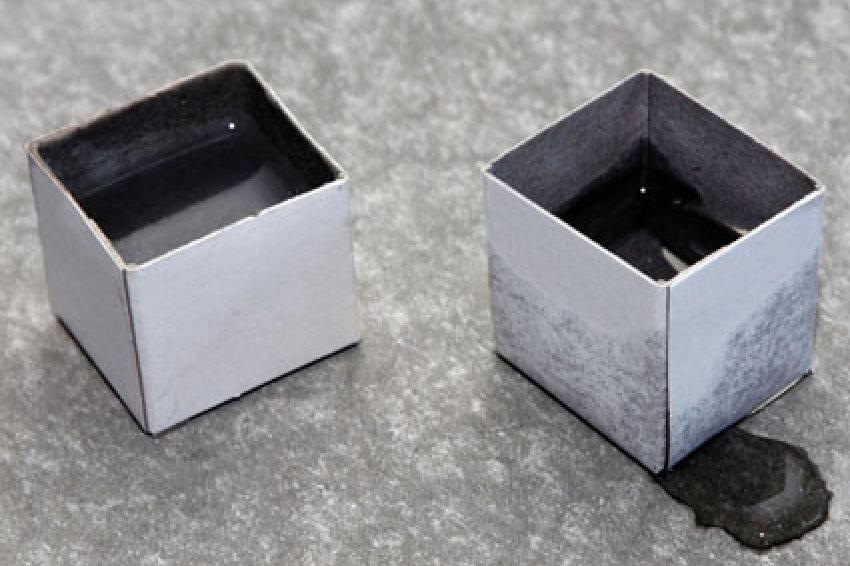Sustainable Building Solutions
Megatrends Drive Energy Efficiency and Carbon Dioxide Awareness in the Construction Industry
Everlasting - Energy and resource consumption are increasing worldwide - and environmental impact with it. Since fossil fuels and resources such as water are finite, saving energy and using natural resources efficiently will be one of the major challenges in the years to come. The construction industry in particular is facing these challenges and has already come up with several methods for working sustainably and protecting the environment to satisfy the ever growing demand for energy and other resources.
The construction industry is changing rapidly. Despite global economic uncertainties, various market research institutes are forecasting significant growth for high-quality and sustainable building materials. The reason is quite clear: worldwide megatrends such as energy efficiency, reduction of CO2 emissions, higher living standards or the use of environmentally friendly technologies are challenges the construction industry must face. The demand for buildings that have appealing and functional design elements and at the same time meet sustainable and environmental requirements is rising on a global scale.
This calls for sustainable and efficient building solutions. In order to provide them, the industry has to reinvent itself ecologically. It has to use products and solutions capable of conserving resources and energy, thus reducing CO2 emissions. Building materials and solutions must support these requirements and promote them effectively - both via specific applications and efficiency enhancement so that fewer resources are used in the first place.
External Insulation And Finishing
The building sector has vast potential when it comes to sustainability: According to a Deutsche Bank study, emissions caused by buildings account for 40% of all CO2 emissions. Applying energy efficiency measures to existing buildings alone can save five times more energy than that produced for the grid by all German nuclear power plants in 2007.
External insulation and finish systems (EIFS) are the simplest and most reliable method of conserving energy for buildings over the long term. Heat loss via radiation is usually underestimated, although it is precisely the surface temperatures in our immediate surroundings, such as walls, floors or ceilings that have a crucial influence on our personal comfort. In Germany, around 650 million m2 of facade were covered with such systems between 1973 and 2004. The resultant energy saving amounts to the annual equivalent of roughly 1 million metric tons of heating oil.
But external insulation not only helps in cold regions where heating is necessary for many months a year. It also improves the energy efficiency of buildings in warm regions. The better a building is insulated, the less energy is needed to create a permanently comfortable interior climate - regardless of whether the building needs to be heated or cooled. Poorly insulated houses can become unpleasantly hot in summer, so that intensive air conditioning is a must. Insulating buildings prevents the wall material from heating up unnecessarily in mid-summer when outside temperatures are high and helps reduce the amount of energy needed for sufficient air-conditioning.
Modern high-quality EIFS are multi-layered insulating systems. The layers are usually cemented together with a mortar that has been modified with special polymeric binders. These additives are crucial, because they enhance the adhesive properties of the mortar and thus provide sufficient adhesion - both between the layers of the system and between the EIFS and the wall. Due to their excellent properties, dispersible polymer powders and polymeric dispersions are the most commonly used binders for this purpose. They provide good adhesion to the substrate and offer optimum flexibility and durability. As a result, the entire insulating system enjoys greater resistance to weathering and wear, and lasts longer.
Energy Efficient Facade Coating Systems and Insulation Materials
To increase the energy efficiency of buildings, applying exterior insulation systems is an important and useful step. But there is even more room for improvement and saving potentials when it comes to the facade of a building.
An example is silicone resin emulsion paints (SREP). They are among the most effective coating systems for facades and protect buildings reliably against moisture and harmful environmental influences. Silicone resins form a network that is not only highly water-repellent, but also permits the water vapor within the wall to permeate to the exterior thus keeping the wall dry inside. Coating systems based on silicone resins provide long-lasting protection and, due to this, also save every second renovation cycle compared to standard coatings.
However, silicone products can also contribute to a cost-effective and "greener" energy balance for buildings. Tests have shown that damp walls coated with SREP contain up to ten percent less moisture after only one year, increasing insulation capacity. In this way, modern silicone resin emulsion paints reduce the heat lost by an unprotected facade. Also, silicone emulsions can be used for the water-repellent treatment of insulation materials such as mineral wool, thereby reducing capillary water absorption significantly. The material retains its insulation effects even if it is not stored properly in a dry place prior to use. In addition, water vapor can get in and out, but liquid water cannot penetrate indoors.
Conserving Water
A resource that is becoming ever scarcer and ever more precious around the globe is water. According to United Nations figures, there are already 1.4 billion people with no access to clean drinking water. By 2025, some 2.5 billion people - a projected one third of the world's population then - could be endangered by an acute shortage of water. In spite of this, water is still wasted due to old and damaged leaky sewers and pipe systems. The construction industry is playing an increasingly important role in saving water by providing construction-chemical solutions in the fields of water transport, water supply and water ways.
A very simple, yet effective solution is sealing slurries. All it takes to effectively prevent water loss in canals or water pipes is a layer of two to three millimeters of polymer-modified sealing slurries. The seal continues to protect even when fine cracks appear in the masonry due to settling or shrinkage. Unlike traditional sealing methods, polymer-modified mineral sealing slurries don't seal up the masonry, so water vapor can diffuse back and forth. Thus, the slurries can help conserve water, but also prevent damage caused by water ingress. Furthermore, they effectively prevent the uptake and transport of pollutants such as chlorides and sulfates.
Saving Material and Reducing Carbon Dioxide Emissions
In terms of sustainability, polymer binders have other benefits, too. For instance, they can improve material efficiency and help save CO2 emissions in existing applications such as in tiling. More than 70% of the world's tiles are currently laid the traditional way using a mortar bed several millimeters thick. This thick-bed method requires a considerable amount of cement and a very skilled worker to fix the tiles reliably to the substrate.
With the development of modern tile adhesives, thick-bed tiling has become obsolete. Due to the excellent adhesive properties of dispersible polymer powders within the formulation, tiles can be laid in a mortar-bed that just covers the wall's surface. Apart from technical advantages such as easy handling, improved adhesion and high flexibility, thin-bed tiling also promotes significant material savings. This is not only a striking cost argument, but also improves the carbon dioxide footprint of tile adhesives. Using the thinbed method lowers emissions by up to 50%.
These and other examples show that sustainable and energy efficient solutions are a key factor in modern construction - worldwide. In many regions, including emerging and developing countries such as China, regulations and guidelines for energy saving measures have already been introduced or are currently under consideration. As a producer of raw materials for the construction industry, Wacker actively promotes the advantages and benefits of eco-friendly and energy efficient solutions, for example by offering special customer seminars at its Wacker Academy training centers around the world. These solutions might appear to be more expensive or complicated at first glance. But they certainly pay off in the long run - economically and ecologically.
Contact
Universität Hohenheim - Institut für Lebensmitteltechnik
Garbenstrasse 25
70599 Stuttgart
Germany









